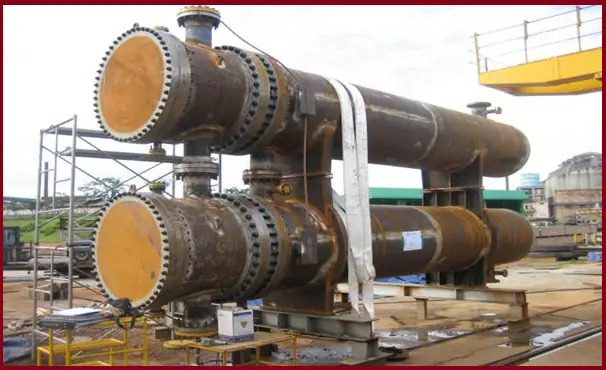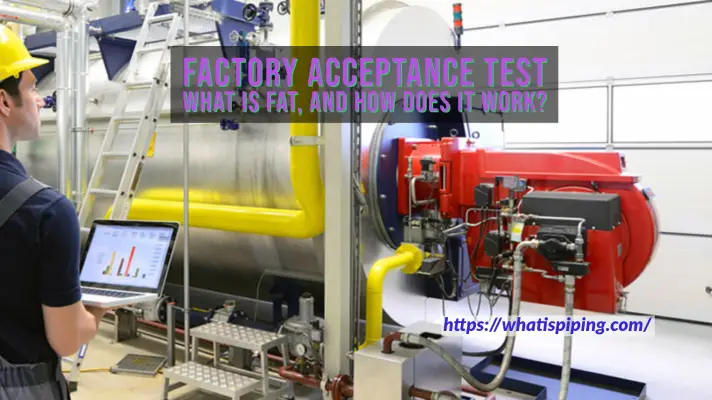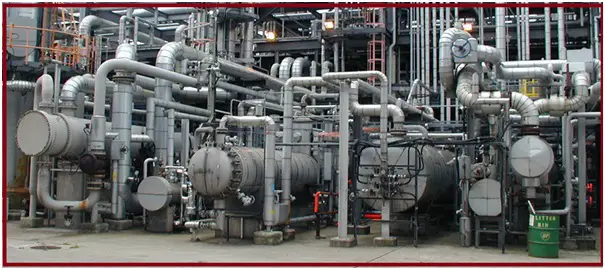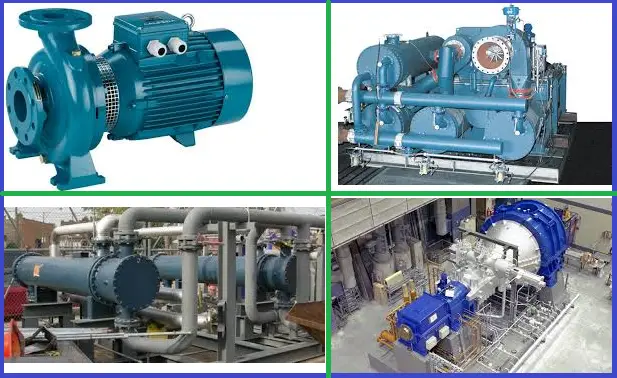The Tubular Exchanger Manufacturers Association (TEMA) is a trade organization of manufacturers of heat exchangers, shell and tube type, in North America. Its mission is to promote the use of heat exchangers and to establish standards for the design and manufacture of heat exchangers. TEMA also provides educational and technical resources for its members, and it works to advance the understanding and acceptance of heat exchanger technology.
Founded in 1939, TEMA is synonymous with quality and integrity when it comes to shell and tube heat exchangers. TEMA Standards are accepted worldwide due to their authority on shell and tube heat exchanger mechanical design.
Importance of TEMA
TEMA is important because it sets industry standards for the design and manufacture of shell and tube heat exchangers, which are widely used in a variety of industrial processes to transfer heat between fluids. By establishing these standards, TEMA helps to ensure the safety and efficiency of heat exchanger equipment and promotes the use of best practices in the industry.
TEMA’s standards provide a common set of guidelines for designers, manufacturers, and users of heat exchangers, making it easier to compare and select equipment that is appropriate for a given application. The standards also help to ensure that heat exchangers are designed, manufactured, and tested consistently, which reduces the risk of equipment failure and improves performance.
In addition, TEMA provides educational and technical resources for its members, which helps to keep them informed about advances in heat exchanger technology and best practices for their use. Overall, TEMA plays an important role in promoting the use and understanding of heat exchanger technology, which contributes to the safe, efficient, and effective operation of many industrial processes.
TEMA Standards
TEMA standards are guidelines for the design and manufacture of shell and tube type heat exchangers, established by the Tubular Exchanger Manufacturers Association (TEMA). TEMA standards cover various aspects of heat exchanger design and construction, including:
Mechanical design: TEMA standards outline guidelines for the mechanical design of heat exchangers, including requirements for materials, welding, and fastening.
Heat transfer performance: TEMA standards specify performance requirements for heat transfer, including heat transfer rate and temperature control.
Hydraulic design: TEMA standards provide guidelines for the hydraulic design of heat exchangers, including requirements for pressure drop, flow rate, and turbulence.
Testing: TEMA standards outline procedures for testing heat exchangers, including requirements for pressure testing, leak testing, and performance testing.
Assembly and maintenance: TEMA standards provide guidelines for the assembly and maintenance of heat exchangers, including requirements for cleaning, inspection, and repair.
TEMA standards are widely recognized and respected in the industry, and they are used by heat exchanger manufacturers, designers, and users to ensure that heat exchanger equipment is designed, manufactured, and tested to a high level of quality. Adherence to TEMA standards helps to minimize the risk of equipment failure, improve performance, and promote the safe and efficient use of heat exchanger technology.
TEMA Latest edition
The latest edition of the TEMA standards is TEMA 10th Edition, which was published in 2019. TEMA releases new editions of its standards periodically to incorporate the latest developments in heat exchanger technology and to address any changes in industry practices. The 10th edition of the TEMA standards includes updates to the guidelines for mechanical design, heat transfer performance, hydraulic design, testing, and assembly and maintenance. It is important for heat exchanger manufacturers, designers, and users to be familiar with the latest edition of the TEMA standards to ensure that their equipment is up-to-date and meets the latest industry standards for quality and performance.
Broadly the 10th TEMA Edition covers the following contents:
- Heat exchanger Nomenclature
- Heat exchanger Fabrication Tolerances
- General Fabrication and Performance Information
- Information related to Heat exchanger Installation, Operation, and Maintenance.
- Mechanical Standards TEMA class RCB Heat Exchangers
- Flow Induced Vibration
- Thermal Relations
- Physical properties of Fluids
- Recommended Good Practices
- Appendix A explaining tube sheets
TEMA Heat Exchangers
TEMA heat exchangers are shell and tube type heat exchangers that are designed and manufactured in accordance with the standards set by the Tubular Exchanger Manufacturers Association (TEMA). TEMA heat exchangers are used to transfer heat between two fluids, where one fluid flows through the tubes and the other fluid flows over the outside of the tubes in the shell.
TEMA heat exchangers are widely used in a variety of industrial processes, including power generation, chemical processing, oil refining, and HVAC systems. They are designed to meet specific performance requirements, such as heat transfer rate, pressure drop, and temperature control, and they can be customized to meet the unique requirements of different applications.
TEMA heat exchangers are known for their reliability and efficiency, and they are widely recognized as a cost-effective and flexible solution for heat transfer applications. By adhering to TEMA’s standards, manufacturers of TEMA heat exchangers ensure that their equipment is designed, manufactured, and tested to a high level of quality, which helps to minimize the risk of equipment failure and improve performance.
Advantages of TEMA Heat Exchangers
There are several advantages to using TEMA heat exchangers, including:
Reliability: TEMA heat exchangers are designed and manufactured in accordance with strict industry standards, which helps to ensure that they are reliable and safe for use in a wide range of industrial processes.
Efficiency: TEMA heat exchangers are designed to transfer heat effectively, which can help to increase energy efficiency and reduce costs.
Customizability: TEMA heat exchangers can be customized to meet the unique requirements of different applications, making them a flexible solution for a wide range of heat transfer needs.
Cost-effectiveness: TEMA heat exchangers are widely recognized as a cost-effective solution for heat transfer applications, and they offer a good balance of performance and cost.
Industry recognition: TEMA heat exchangers are widely recognized and respected in the industry, which helps to ensure that they are a well-regarded and reliable solution for heat transfer needs.
Overall, TEMA heat exchangers offer a combination of reliability, efficiency, and cost-effectiveness that makes them a popular choice for many industrial heat transfer applications.
TEMA vs ASME: Difference between TEMA and ASME
TEMA (Tubular Exchanger Manufacturers Association) and ASME (American Society of Mechanical Engineers) are both organizations that establish standards for the design and manufacture of heat exchangers, but they have some differences:
Scope: TEMA standards focus specifically on the shell and tube-type heat exchangers, while ASME standards cover a wider range of pressure vessels and boilers, including shell and tube heat exchangers.
Emphasis: TEMA standards place a greater emphasis on the mechanical design of heat exchangers, including requirements for materials, welding, and fastening. ASME standards place more emphasis on the pressure-containing aspects of heat exchangers and also cover performance requirements for heat transfer and hydraulic design.
Compliance: TEMA standards are primarily used in North America, while ASME standards are used globally. Some heat exchanger manufacturers may comply with both TEMA and ASME standards to ensure that their equipment meets the requirements of a wide range of customers.
Technical resources: TEMA provides educational and technical resources for its members, including training and technical support, while ASME provides a wide range of resources and services, including code development, certification, and accreditation programs.
Both TEMA and ASME play important roles in establishing standards for the design and manufacture of heat exchangers, and they help to ensure that heat exchanger equipment is designed, manufactured, and tested to a high level of quality. Ultimately, the choice of which standards to comply with will depend on the specific requirements of the heat exchanger and the preferences of the manufacturer, designer, or user.









Very nice blog
If any whatsapp group please add me 7984434043
GREAT